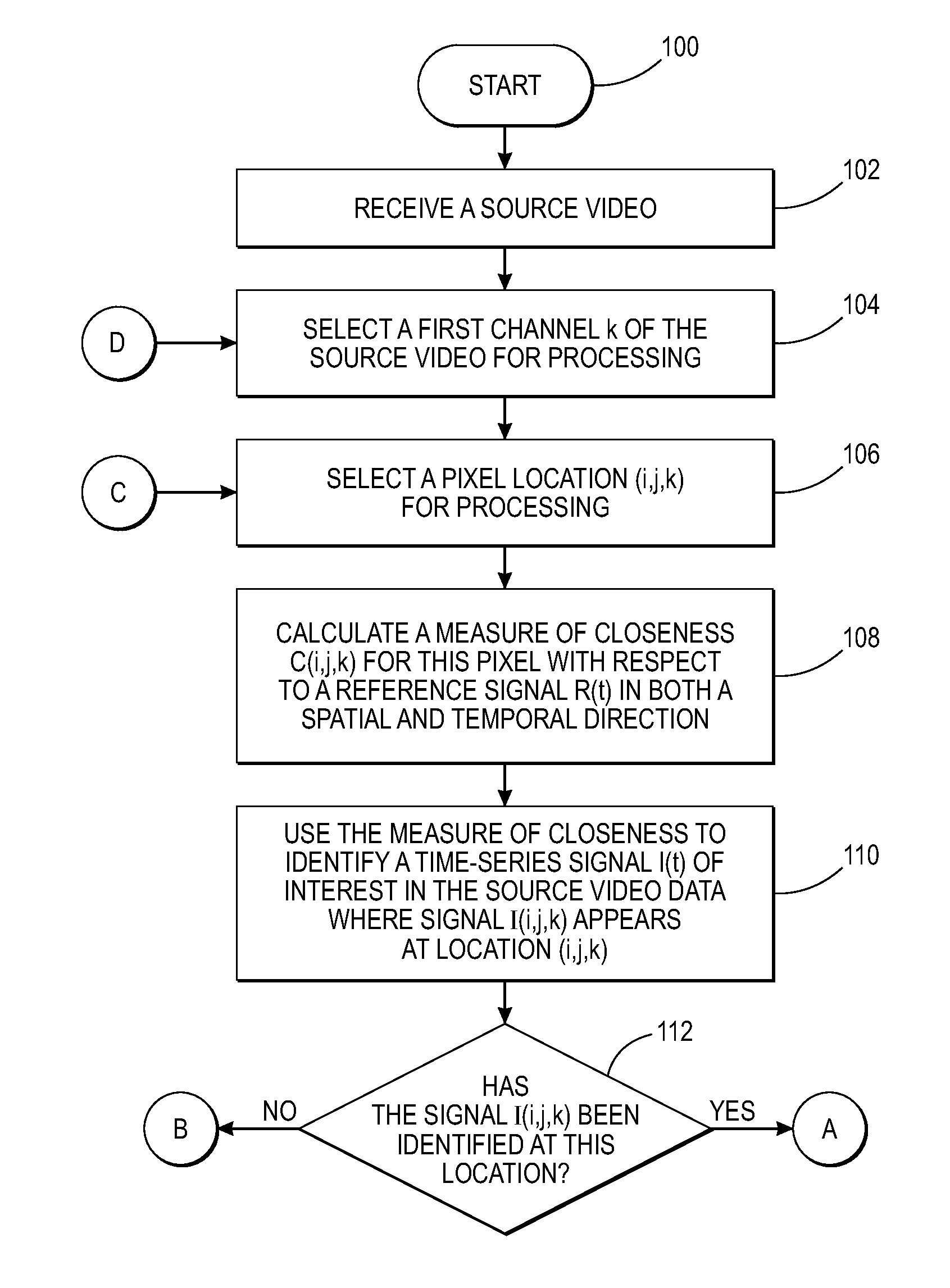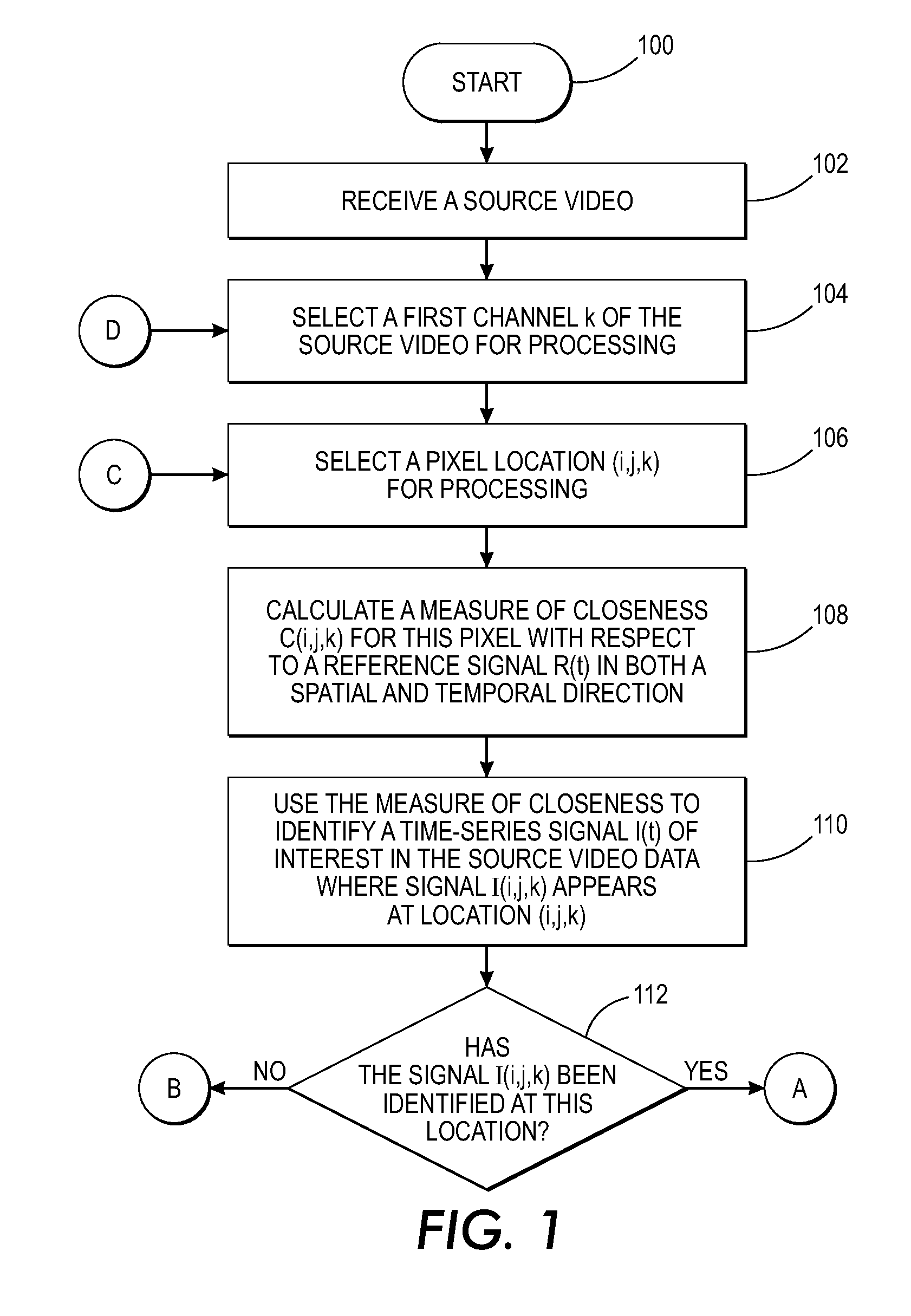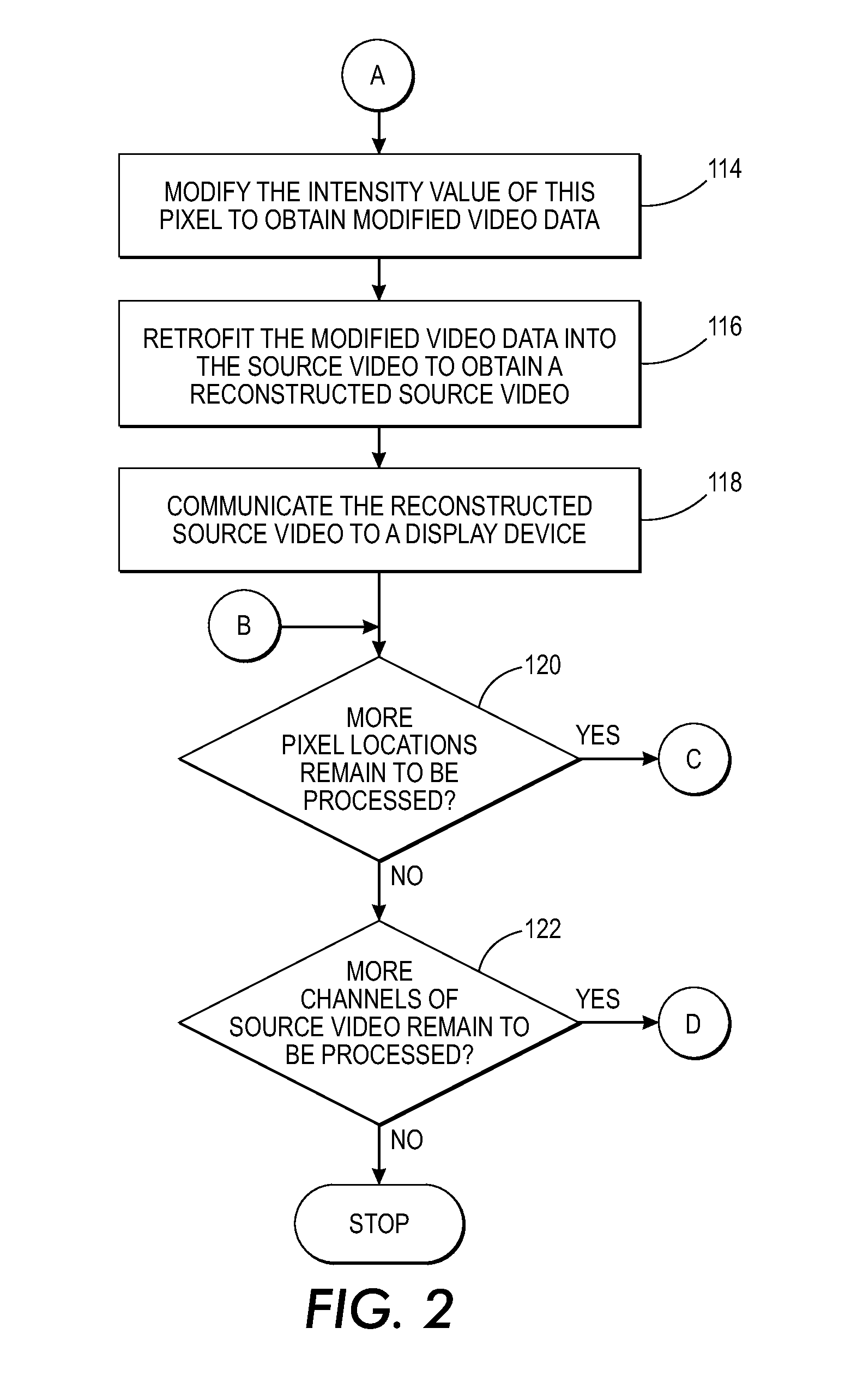Processing source video for real-time enhancement of a signal of interest
- Summary
- Abstract
- Description
- Claims
- Application Information
AI Technical Summary
Benefits of technology
Problems solved by technology
Method used
Image
Examples
Embodiment Construction
[0030]What is disclosed is a system and method for processing source video to identify a time-series signal contained within that source video data and modify the intensity value of pixels in the image frames of that video associated with that signal such that, upon playback, the signal is visually enhanced. The teachings disclosed herein enable users to see the enhanced signal, and see how it is distributed and how it propagates.
NON-LIMITING DEFINITIONS
[0031]“Source video” refers to a time varying video signal acquired over C channels where k=1 . . . C, using a multi-channel video acquisition system as defined herein. The acquired video signal comprises a plurality of image frames. Each frame of the video is a 2D array of pixels with each pixel location (i, j, k) in the video having an intensity Iijk that corresponds to an amount of detected reflected energy projected by an illumination source over a wavelength range of interest.
[0032]“Receiving source video” is intended to be wide...
PUM
 Login to View More
Login to View More Abstract
Description
Claims
Application Information
 Login to View More
Login to View More - R&D
- Intellectual Property
- Life Sciences
- Materials
- Tech Scout
- Unparalleled Data Quality
- Higher Quality Content
- 60% Fewer Hallucinations
Browse by: Latest US Patents, China's latest patents, Technical Efficacy Thesaurus, Application Domain, Technology Topic, Popular Technical Reports.
© 2025 PatSnap. All rights reserved.Legal|Privacy policy|Modern Slavery Act Transparency Statement|Sitemap|About US| Contact US: help@patsnap.com



